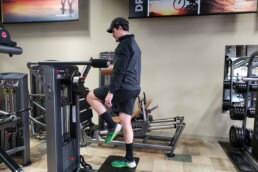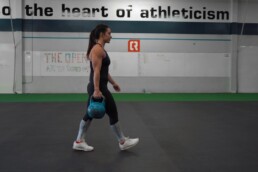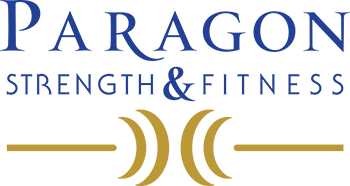The Importance of Unilateral Development
What is Unilateral or Bilateral Movement in Sport
Most sports training programs focus on bilateral movements. When defined, bilateral means having or relating to two sides; affecting both sides. When put into sport-specific training terms, think of your major compound lifts: The bench, squat, deadlift, power clean, etc. When defined, unilateral means relating to, occurring on, or affecting only one side of an organ or structure, or of the body. When this is put into a sport-specific training we think of single-leg squats, lunges, split squats, step-ups, etc. There are studies that show unilateral and bilateral training lead to similar effects in terms of strength, sprint speed, and change of direction speed. For example, 18 rugby players spent 5 weeks training their legs with either single-leg or both-leg squats. (1) Both groups saw similar improvements in their agility, strength, and coordination. While differences may not be significantly apparent across a group, injury risk, field performance, and the normalization of data are very difficult to account for.

A step-up is a common movement used to test single-leg stability, knee tracking and strength discrepancies.
What should we focus on more?
Athletes need to be well rounded. They need to be strong, yet agile. They need to be explosive, yet stable. This is achieved by training both bilateral and unilateral movements. Clients that follow our athletic performance training protocols will focus on increasing both in any given session. A 2016 Study(2) shows that unilateral training over a given training cycle may not see massive increases in bilateral strength, but will notice improvements in those specific unilateral movements. While this may seem like a waste of time if you aren’t gaining overall strength, there are several factors to consider that prove unilateral development is incredibly useful in training:
1. Unilateral Movements are More Common In Sport
Athletes should train squats, deadlifts, power cleans and similar bilateral movements to increase their overall strength and power. But, in any given sports training program, unilateral movements are king. Running, jumping, pivoting, kicking, punching and changing directions are just a small sample of movements athletes perform in any given sport. Athletes need to have the ability to be powerful, but light on their feet. At Paragon, our favorite unilateral movements are weighted step-ups, single-leg broad jumps, single-leg squats, single-arm overhead presses with an overhead carry and single-arm dumbbell bench press to name a few. We preach form and control over anything heavy with these movements. The goal is to mimic the bilateral movement, just unilaterally. This means proper knee, elbow, and core positions in any given movement, regardless if our athletes are using one or two body parts.
Sprinting relies heavily on single-leg explosive power.

2. Unilateral Training Can Correct Muscular Discrepancies
Most athletes create some sort of imbalance due to their sport. It’s easy to see and easy to test. Sports place a greater strain on one side of the body due to using a preferred leg or arm to kick, jump, run or throw. Most athletes will jump off of one leg for a lay-up or pitch and catch a baseball with the same arm each time. Instead of wishing every athlete could be ambidextrous, we can have every athlete train their unilateral movements. Not only will single-arm or single-leg training increase the strength on the weak side (as shown in the above studies), but it can correct the posture and form of the dominant side.
Everyone has a stronger side even if you don’t play a sport. Ask anyone you know what arm or leg is stronger and they know almost immediately. That strength gap may never fully close, but the goal of unilateral movement is to at least work on creating closer comparisons of strength. This may not lead to overall strength gains as mentioned above, but you can certainly expect better stability in any given movement and less risk for injury as well.
The suitcase carry is an anti-rotational movement that targets your core, shoulders, back, forearms and legs on the side the movement is performed.

3. Unilateral Development Isn’t Just for Athletes
From one on one clients to our Paragon athletes, everyone at Paragon performs unilateral movements. From single leg glute bridges to suitcase carries, our clients perform unilateral movements in almost every session. Stability is important for everyone, regardless of age or athletic ability. Not only is unilateral strength work fun, but it is also eye-opening to many clients who had absolutely no idea one leg or arm was so much stronger than the other. It creates a desire in them to remedy the situation and gives us a common goal that we share with them.
On top of being a great training tool, unilateral development training also offers a mental “break” for our clients. If you are worn down, or you are still sore from your last workout, unilateral work offers a nice change of pace from usual bilateral movements. You can’t lift nearly the same amount of weight with one leg or arm as you can using both. This inheirantly means less overall stress on the CNS. Are you beat up from squatting? Try nice slow controlled step-ups to work your legs without putting more stress on your joints.
Get More From Your Training
Start reaping greater rewards from your training with the help of the best personal trainers in the Nashville area, who will tailor a plan just for you and your goals. Contact Paragon Strength & Fitness to start your life-changing journey today.
1. Speirs, Derrick E., Mark A. Bennett, Charlotte V. Finn, and Anthony P. Turner. “Unilateral vs. Bilateral Squat Training for Strength, Sprints, and Agility in Academy Rugby Players.” The Journal of Strength & Conditioning Research 30, no. 2 (2016): 386-392.
2. Botton, Cíntia E., Regis Radaelli, Eurico N. Wilhelm, Anderson Rech, Lee E. Brown, and Ronei S. Pinto. “Neuromuscular adaptations to unilateral vs. bilateral strength training in women.” The Journal of Strength & Conditioning Research 30, no. 7 (2016): 1924-1932.
